Real Estate Newsletter Engagement Strategies
Real Estate Newsletter Ideas
1. Upcoming Events
The best real estate newsletters contain plenty of local lifestyle information. Upcoming events are a fantastic way to generate sustained interest from your contact list and boost your open rates.
Another great benefit is that it highlights the vibrant social life available to people considering relocation. Plus it’s easy to curate your upcoming events to suit your target demographics.
Check Eventbrite, Timeout, and local government websites for the best upcoming events each month. Beyond that, here’s a list of kinds of events you should consider including in a real estate newsletter:
- Concerts & Live Music Events
- Festivals
- Holiday Events
- Workshops
- County Fairs
- Conferences & Networking Events
- Charity Events & Fun Runs
- Theater Performances
- Sporting Events
- Tournaments & Competitons
- Trivia Nights
- Art Exhibitions
- Film Screenings
- Comedy Shows
- Dance Parties and Lessons
- Auctions
- Block Parties
- Craft Fairs
- Food Truck Meetups
- Board and Card Game Meetups
- Cooking Classes
- Happy Hours
- Gaming Tournaments
- Dating Events
- Family Fun Days
- Movies in the Park
- Summer Camps
- Murder Mystery Events
- Medival Events
- Haunted Houses
- Drag Shows & Burlesque
- Dog Shows
- Beach Parties
- Wine, Beer, and Liquor Tastings
Pro Tip: Include clickable buttons for “Forward to a Friend” and “Subscribe/Join Mailing List”. It’s a great way to passively build your real estate newsletter contacts.
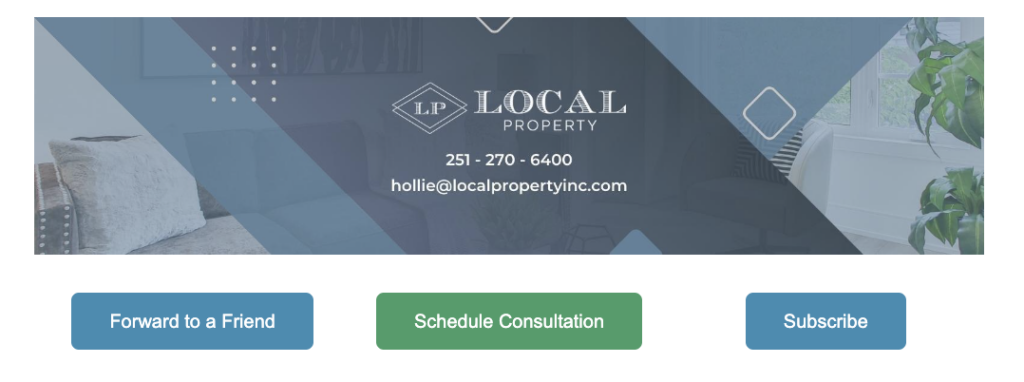
2. Blog Posts
If you’re creating blog content, you have to share it! Especially at the beginning of your SEO efforts, this is a great way to build an audience that interacts with your websitecontent. Google pays a lot of attention to user interaction when deciding how well to rank blog articles.
The catch-22 is that your blog posts may not rank well at the beginning, leaving Google with minimal proof that people love your content. By sharing blog posts on a real estate newsletter, you can solve this issue.
Real Estate Newsletter Blog Post Ideas
Here are 100 blog post ideas for real estate newsletters.
25 Blog Post Ideas For Homebuyers
- “10 Essential Tips for First-Time Homebuyers”
- “Navigating Neighborhoods: Finding the Perfect Fit for Your Family”
- “The Ultimate Home Buying Checklist: Don’t Miss a Thing!”
- “How to Secure the Best Mortgage Rates in Today’s Market”
- “Hidden Gems: Exploring Up-and-Coming Areas for Home Buyers”
- “The Art of Negotiation: Getting the Best Deal on Your Dream Home”
- “Buying vs. Renting: Which Makes More Financial Sense?”
- “Understanding Closing Costs: What to Expect and How to Prepare”
- “Home Inspections 101: What Every Buyer Should Know”
- “The Future of Smart Homes: What to Look for in Your Next Property”
- “The Millennial’s Guide to Homeownership: Tips and Tricks”
- “Beyond the Basics: Understanding HOA Fees and Regulations”
- “A Step-by-Step Guide to Pre-Approval for Home Loans”
- “Multi-Generational Living: Finding Homes that Fit Every Family Member”
- “Eco-Friendly Homes: How to Find and Buy a Sustainable Property”
- “The Psychology of Home Buying: Finding Your Emotional Fit”
- “Old House, New Home: Renovation vs. New Build Decision-Making”
- “Virtual Tours vs. In-Person Viewings: Pros and Cons”
- “The Role of Location in Home Buying: Factors to Consider”
- “Avoiding Buyer’s Remorse: Making Confident Purchase Decisions”
- “Investing in Fixer-Uppers: Tips for Renovating on a Budget”
- “Exploring New Construction: What to Know Before Buying”
- “The Impact of Interest Rates on Home Buying: A Comprehensive Guide”
- “Home Buying as an Investment: Long-Term Benefits and Strategies”
- “Finding Your Dream Home: Balancing Wants vs. Needs”
25 Blog Post Ideas For Home Sellers
- “Maximizing Your Home’s Curb Appeal: Easy Upgrades for Sellers”
- “Staging Secrets to Make Buyers Fall in Love with Your Home”
- “The Power of Professional Photography in Selling Your Home”
- “Timing the Market: When Is the Best Time to Sell Your Home?”
- “DIY vs. Professional Repairs: Where to Invest Before Selling”
- “Selling Your Home? Here’s How to Set the Right Asking Price”
- “Creating Irresistible Listing Descriptions: Words That Sell”
- “Open House Success: Tips to Attract Potential Buyers”
- “Negotiating Offers: Strategies to Get the Best Price for Your Home”
- “Tapping into Tech: Marketing Your Home in the Digital Age”
- “Preparing for the Appraisal: Boosting Your Home’s Value”
- “Selling in a Competitive Market: Strategies to Stand Out”
- “Pets and Home Selling: How to Present Your Home Paw-fectly”
- “Downsizing Done Right: Tips for Empty Nesters Selling Their Home”
- “Selling During the Holidays: Making the Most of Festive Seasons”
- “Navigating the Emotional Journey of Selling Your Home”
- “Storage Solutions: Decluttering Your Home for Sale”
- “Understanding Contingencies: What Sellers Need to Know”
- “The Art of the Open House: Hosting Tips for Sellers”
- “Seller’s Guide to Negotiating Multiple Offers”
- “The Power of Home Staging: Transforming Your Space for Sale”
- “Tech Upgrades to Boost Your Home’s Selling Potential”
- “Selling in a Seller’s Market: Maximizing Opportunities”
- “The Importance of Professional Inspections Before Selling”
- “Virtual Selling: Strategies for Remote Home Sales”
25 Blog Post Ideas About Moving To Your Area
- “Moving to [Your Area]: Everything You Need to Know”
- “Top Reasons Why [Your City/Town] Is the Perfect Place to Live”
- “A Day in the Life: Living in [Your Area]”
- “Best Neighborhoods for Families in [Your City]”
- “Cost of Living Breakdown: Is [Your Area] Affordable?”
- “Exploring the Job Market in [Your Area]: Opportunities and Trends”
- “Community Spotlight: Meet the Locals in [Your City/Town]”
- “Recreation and Leisure: Activities in [Your Area] for Newcomers”
- “Schools and Education: What Parents Should Know About [Your Area]”
- “Moving Hacks: Simplifying Your Relocation to [Your City]”
- “The Ultimate Relocation Checklist: Making Your Move Smooth”
- “Renting vs. Buying: Deciding on Your Next Move”
- “The Cost of Commuting: Factors to Consider Before Moving”
- “Finding Your Dream Neighborhood: A Comprehensive Guide”
- “Moving with Pets: Tips for a Stress-Free Transition”
- “The Impact of Remote Work on Relocation Trends”
- “Moving Abroad: What You Need to Know Before the Big Move”
- “Navigating School Systems When Moving to a New Area”
- “Settling In: Community Resources for New Residents”
- “The Upsides of Downsizing: Making a Smaller Space Work for You”
- “Moving with Kids: Tips for Easing the Transition”
- “Embracing a New Lifestyle: Adapting to a Different City”
- “Understanding Relocation Packages: What to Expect”
- “International Moves: A Complete Guide to Settling Abroad”
- “Retiring to [Your Area]: A Guide for Seniors Considering a Move”
25 Blog Post Ideas for Locals
- “Hidden Hotspots: Uncovering Secret Gems in [Your Area]”
- “Community Events Calendar: What’s Happening in [Your City] This Month”
- “Restaurant Roundup: Must-Try Eateries in [Your Area]”
- “Outdoor Adventures: Exploring Nature in [Your City/Town]”
- “The Evolution of [Your Area]: From Past to Present”
- “Historic Homes and Architecture in [Your City]: A Walking Tour”
- “Local Market Trends: What’s Happening in Real Estate in [Your Area]”
- “Living Green: Sustainability Initiatives in [Your City]”
- “Volunteering Opportunities: Giving Back in [Your Community]”
- “Spotlight on Safety: Ensuring Security in [Your Area]”
- “Real Estate Investment Opportunities in [Your Area]”
- “Growth and Development: Changes on the Horizon for [Your City]”
- “Preserving Local Culture: Balancing Modernization in [Your Area]”
- “The Rise of Co-Living Spaces in [Your City]: Pros and Cons”
- “Celebrating Diversity: Cultural Festivals in [Your Community]”
- “From Urban to Rural: Finding Your Perfect Living Environment”
- “Aging in Place: Community Support for Seniors in [Your Area]”
- “The Impact of Tourism on [Your City]: Pros and Cons”
- “Understanding Zoning Laws: How They Shape Your Community”
- “The Future of Real Estate: Trends Shaping [Your City]’s Market”
- “Real Estate Forecast: Predictions for [Your City]’s Market”
- “Preserving Green Spaces: Sustainability Efforts in [Your Area]”
- “The Rise of Co-Housing Communities in [Your City]”
- “The Impact of Gentrification on [Your Neighborhood]”
- “Real Estate and Technology: Innovations Shaping [Your City]’s Future”
3. Market Updates
Personally, I don’t recommend including a dedicated market report in every real estate newsletter. I believe it makes more sense to update your contacts when a significant change occurs.
Or to put it differently, wait until it’s a great time to buy or sell. Then inform your readers what factors contribute to the current market situation.
Pro Tip: Market reports usually require visual data for most people to find them digestible. For that reason, I recommend creating videos where you screenshare the market data from authoritative sources, which allows you to access visual data without copyright infringement. Even a low-budget, 2-minute video can be far more effective than you might imagine.
4. Newsjacking
Another method to communicate market trends is newsjacking, which is responding to real estate news content with your opinion. Especially when the news is alarming or it features the opinion of someone famous, it serves as a great hook.
Imagine how clickable this email subject line would be:
“Elon Musk says your housing market will crash. Is he a bonehead?”
I would again recommend screensharing the news article and sharing your opinion via voiceover. It’s going to be more engaging than written content, period.
5. Free Resources
For example, you can download our eBooks geared towards homebuyers and sellers for free. You can distribute these (without charging, of course) to anyone in any way you want. If you want to add your branding, logo, and name, just get in touch with us.
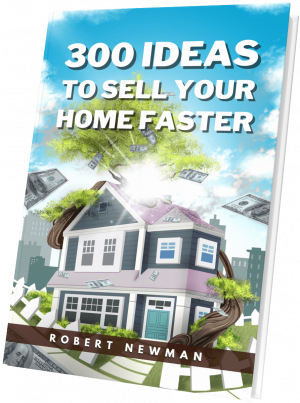
FREE eBook
300 Ideas to Sell Your Home Faster
Use this extensive checklist of the smartest home improvements, listing process hacks, and more to help clients and delight prospects.
To purchase a branded version of this eBook with your name and logo, reach out to aubrey@inboundrem.com.
6. Community Spotlights
Highlighting local businesses is a great real estate newsletter idea to introduce your readers to more local lifestyle, while deepening your relationship with the community. Ideally, you include an interview with the owner and a review of their service or product.
7. Client Testimonials
In my opinion, client testimonials are essential to every real estate newsletter. For InboundREM Email Campaigns, we create a template for the newsletter and then insert a great client review.
Social proof is extremely powerful for converting leads, and client testimonial templates are a great way to get your face in front of your audience.
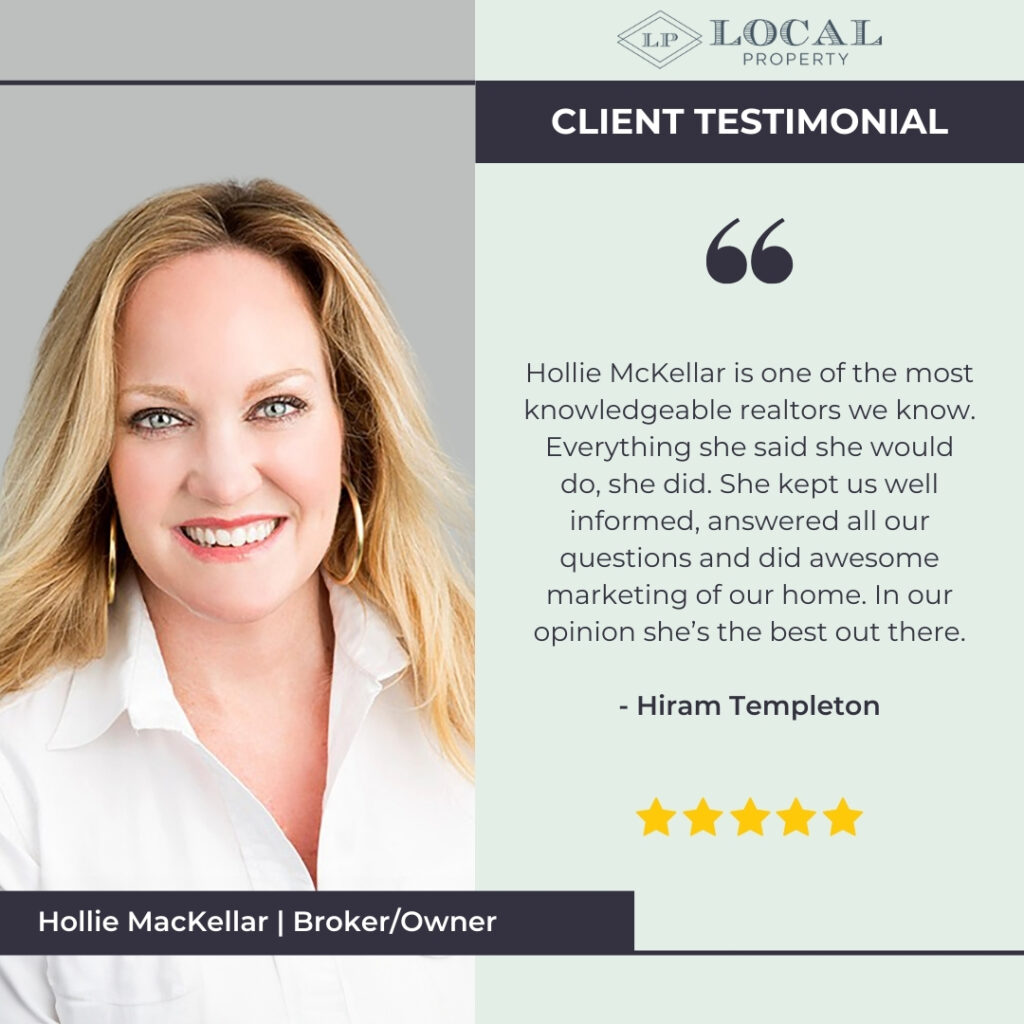
8. Video Content
Video marketing is the present and future of real estate marketing. If you want to be a highly successful real estate agent in 10 years, you’re probably going to have to create video content at some point.
Better to hone your skills sooner than later. Use the reluctance of competing realtors to your advantage because it works.
Here are three guides to the best kinds of video content you can create.
Real Estate Newsletter Hacks and Tips
1. Consultation Links
Consultation links to meeting schedulers like Calendy or HubSpot are crucial to turning your real estate newsletter into a high-functioning lead generation funnel.
Consider adding two links to your standard real estate newsletter template. Best case scenario, you have options for 15, 30, and 60 minute consultation calls.
Let your readers know that there’s zero commitment attached. Make it clear you enjoy a friendly chat with anyone interested in the local market.
2. Scrub your contact lists.
If you use a feature-heavy platform like Robly, there are built-in tools to track hard and soft bounces. Hard bounces will automatically be removed from your standard email blast, and soft bounces will be tracked to see if their lack of engagement continues.
If you don’t use a email marketing platform that tracks bounces for your real estate newsletters, then use one of the following website to track that for you.
Scrubbing your contact list once or twice a year ensures that your real estate newsletters look like valuable content and prevents your content from going to spam.
3. Branding
I recommend getting a professionally-designed and well-branded header and footer to reuse for every newsletter. Here are examples that IREM has created for our clients.


Including a professional headshot and contact information is always a smart conversion technique. Just ensure you use consistent branding across all of your content.
4. Consider hiring a virtual assistant.
You can outsource a lot of work to competent, well-spoken, and inexpensive resources from countries like the Philippines. It’s common to find a great Virtual Assistant at $10 or even $5/hour.
Busy work like collecting, writing, and formatting local events is probably not the best use of your time, given the existence of Virtual Assistants that can be worth their weight in gold.
5. Subject Lines
The subject line is the most important piece of text for the entire email. While most of these example email newsletter subject lines are not real estate related, they are a great way to inform yourself of what gets clicked.
Best Tips for Real Estate Newsletter Subject Lines
- Keep subject lines under 41 characters
- Be concise: 7 words or less work best
- Honesty in subject lines is key, so avoid misleading content
- Steer clear of spam triggers like “free,” “sale,” and “discount”
- Stay away from all caps and excessive exclamation marks
- Ensure your subject line aligns with your email’s content to avoid the spam folder
Best Examples for Real Estate Newsletter Subject Lines
- Hi [Name], [Question]?
- Here’s that info I promised you
- “[Name], I thought you might like these [Blogs, recipes, tips, etc.]”
- Don’t miss out on these amazing [Insert area] events this month
- Here’s Your Private Invite
- Don’t tell my boss that…
- Feeling [Insert emotion]? Let me help
- Things are heating up in [Insert target market]
- Don’t open this email unless…
- Fall in love with [Insert area]
- Live Your Best Life In [Insert area]
- *Clink* Cheers to…
- 5 Things To Do In [Area] This Weekend
Pro Tip: Add personalization to email subject lines by including the first name of the contact. This small trick can increase open rates in a big way.
6. Be personal over professional.
Here are my best tips for being personal on real estate newsletters.
- Use an automation tool to insert every person’s first name in the salutation and/or headline. (Basically all email marketing platforms allow this.)
- Use a conversational tone.
- Sign off with your first name.
- Include video with your face as often as possible.
7. Use a mixture of email blasts with single and multiple CTAs.
Some titans of marketing, like Neil Patel, endorse using only a single Call-to-Action per email. His email blasts usually have very little text and a single link to click.
Personally, I think this is probably a brilliant strategy when you’re an extremely well known brand with lots of authority. Probably only a fraction of one percent of agents can do this.
I recommend doing a monthly newsletter with loads of content, events, video, and more to click. Then you can intersperse those with short, single-CTA email blasts.
8. Strive for a 30% open rate and 5% click rate.
Once you start hitting these marks, experimentation is going to have a lesser impact and become less worthwhile. Until you reach these rates, think harder about how to provide better value to your contacts.
That said, pushing beyond those benchmarks happens consistently when you’ve built a high degree of trust with your readers. That comes from providing insane value to your contacts again and again.
The average open rate for the real estate industry is 14%, but you should be able to beat that if you follow this real estate newsletter guide.
9. Overcommunicating is better than undercommunicating.
Put simply, overcommunicating may result in increased unsubscribe rates, but undercommunicating results in lost business.
Overall, you’re going to lose more potential transactions from not reaching out enough than you will by driving away contacts that get irritated by consistent outreach. Truth be told, you probably weren’t going to convert prospects that get annoyed by lots of valuable local lifestyle and real estate content.
Robly vs Mailchimp
Robly Review
Robly is a true marketer’s tool. It’s not for the faint of heart, but it tracks plenty of metrics and has lots of helpful tools. For example, it automatically sorts your contact list into engaged and unengaged subscribers.
This makes it simple to send all of your content to engaged subscribers, but reserve your most engaging content for unengaged subscribers in order to reel them back in.
Another great Robly tool is the OpenGen feature, which automatically sends a second email of the original to all of your subscribers that didn’t open the first email. As you can see below, this feature helps capture a significant amount of attention.

An average of 50% open rates and 8.8% click rates are way above average for the real estate marketing niche. Most marketing experts aim for 30% open rates and 5% click rates as a lofty goal.
With the OpenGen feature (which resends an email to those who didn’t open the original email) and the AI feature (which optimizes the email delivery time according to past data), we had about 9000 additional email opens in the last 30 days.
That’s a lot of additional interaction considering the cost of Robly. Most real estate agents will pay either $15 or $29 per month. If you have more than 2500 contacts, you’ll probably pay $49 per month.
Personally, I have had some issues with importing contacts from another source to Robly. In most cases, I’ve found Robly’s support team to be quick to respond and helpful. But there have been a couple of headaches as well.
So you know, that’s an affiliate link above. But if you know anything about IREM, you know that we are huge fans of complete transparency. Don’t sign up until you’ve read the review of Mailchimp below, as it could be a better option.
Mailchimp Review
Mailchimp stands tall among top-tier email marketing platforms. Renowned for its user-friendly software, it simplifies the creation of automated email marketing campaigns, making them both effortless and appealing.
Mailchimp offers a forever free plan for a single user, allowing up to 1,000 email sends per month. Its competitively priced paid plans kick off at just $13 per month, catering to up to 5,000 monthly email sends.
Overall, it’s a great option if you don’t want many bells and whistles. For many real estate agents and small agencies, it can be a great place to start.
That said, even one extra conversion per year from an email marketing campaign can pay for itself and then some. Robly’s features make that a strong possibility. It’s really just a matter of whether you want to dedicate some time to learn how to use the interface.
Schedule a Meeting
Let’s chat about how an SEO-focused website that YOU OWN, Google Business Profile Campaigns, or Custom Email Campaigns can generate high-quality leads and exceptional long-term ROI. If my services aren’t the best move for you, I’ll gladly point you in the right direction
Contact Form
Free eBooks for Agents

Download any or all of our real estate marketing eBooks. These books contain cutting edge information, deep-diving case studies, actionable hacks to skyrocket your business.



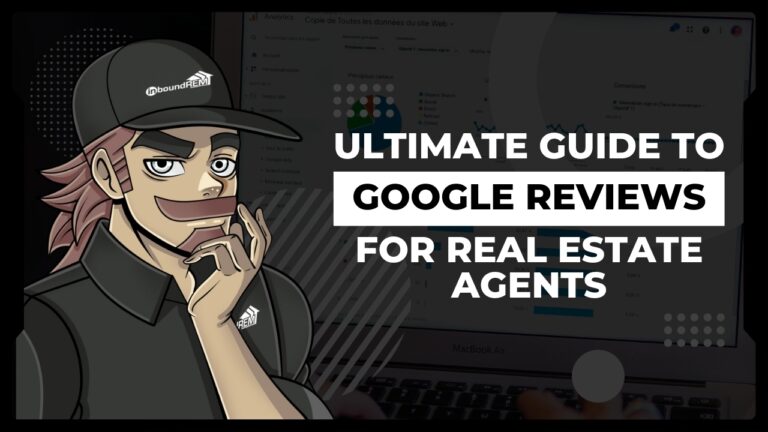


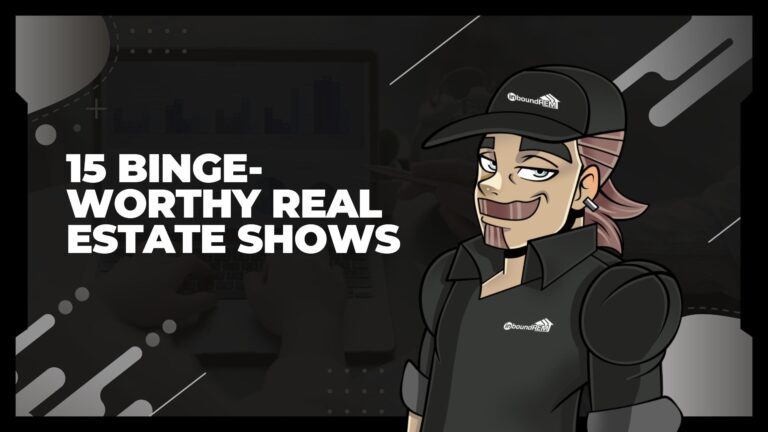
4 Comments
I have used Constant Contact for my email marketing for nearly five years, every Wednesday morning without ever missing an email. Last week, I had a 35% open rate with a 3% click-through rate. Constant Contact isn’t cheap, but the platform works well and looks good.
Reed, thank you for taking the time to comment! Those numbers are pretty strong for the real estate niche, and I agree that Constant Contact can be a great platform for agents. You’re right, it’s not cheap, but email marketing in general is. So you might as well pay for a provider you love. One thing I love about Robly is the data they provide about the optimal time to send emails for maximum open and click rates. Paired with the Robly AI scheduling feature, it can have powerful results. You might consider trying late afternoon or early evening send times. For us, that gets better interaction than morning emails. But if you’re happy, we’re happy!
Thanks for the advice, Benjamin! I send Wednesday mornings and have done so for so long my clients have come to expect that. I also re-send to non-openers on Saturday morning and pick up another 5%+. After reading your article, I scrolled through my past campaign open rates and have had several weeks over the last year with open rates over 40%! My best was 45%, and my range hasn’t been below 30% in over a year. I guess I’ll stick with what is working!
More power to you Reed! Those are great numbers. Feel free to add our eBook “300 Ideas to Sell Your Home Faster” to your website as a downloadable lead magnet to capture more emails. You can also send the PDF or link via email to provide prospects with value. Just avoid using words like “free” to make sure it doesn’t go to spam:
https://inboundrem.com/free-real-estate-marketing-ebooks/